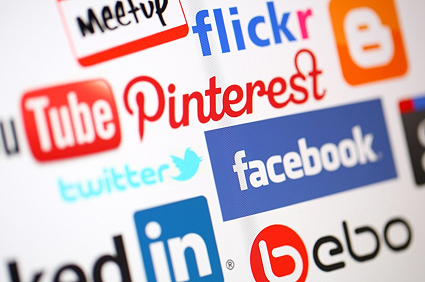 "Do you know the
confounding thing about Facebook?” a colleague confided in me. "Just when we
thought we had the whole social media thing figured out, their demographic
takes a major shift!” What he was referring to was the fact that young people
have spurned Facebook in favor of other social media sites such as Twitter,
SnapChat, and Instagram. Facebook has evolved to a much friendlier environment
for advertisers, but those who wanted to market to the very young are finding
that the young have left the billion-viewer site and those who are using
Facebook are much older and not nearly as tech savvy as the youngsters.
"Do you know the
confounding thing about Facebook?” a colleague confided in me. "Just when we
thought we had the whole social media thing figured out, their demographic
takes a major shift!” What he was referring to was the fact that young people
have spurned Facebook in favor of other social media sites such as Twitter,
SnapChat, and Instagram. Facebook has evolved to a much friendlier environment
for advertisers, but those who wanted to market to the very young are finding
that the young have left the billion-viewer site and those who are using
Facebook are much older and not nearly as tech savvy as the youngsters.
As the ever-changing world of technology meets marketing, you
can expect to see more of this. What happened to cause this shift? First of
all, Facebook caught on with the parents of the Gen Y crowd and the kids don’t
exactly want mom and dad "liking” everything they post. But there is something
more that you have to understand about the values of the young generation. They
don’t like to be "sold” in the traditional sense of advertising. This is where
Facebook stepped over the line with them. Their sponsored advertising running
down the right column of the page was too in-your-face for the younger
generation, who would prefer to buy something based upon the experience of
their friends. That is why the "like” first came about on Facebook.
I used the word values
to describe the preferences of the younger generation. Let me clear up two key
concepts that are very important in marketing with social media - or any media for that matter. Values are beliefs
that become engrained in us and rarely change in a person as they enter
adulthood and live out the rest of their lives. They should not be confused
with attitudes, which will change as
opinions shift. In our example above, Gen Y has changed its mind about
Facebook. However, they have not changed their mind about using technology or
making decisions based on what their friends like. Facebook, as the preferred
social media site, has changed. That is an attitude. Using technology as a
primary source of communication is not going to change. That is a value. When
you are marketing to a specific age group, it will do you well to understand
what is a value and what is an attitude. Both impact the culture of your target
market. Attitudes will come and go and you can market to what is hot now. You
cannot effectively market if you violate the values of the group.
There is a third component that will impact the culture to
which you are marketing. It is choice.
The more choices you have, the more it impacts attitudes and it shapes our
values. For instance, if there were no such thing as social media or mobile
phones, how would the younger generation communicate? Would they use a landline
phone, like I did when I was a kid? It would shape their values if all of their
conversations were spoken and audible instead of texted and photographed.
Choice factors into everything we do. We are surrounded by it. Go into a
grocery store and see how many choices you have for every item on the shelves. It
causes us to expect to have more than one solution to everything we do. This
means that marketing is a multiple choice proposition instead of a one solution
answer. If you market saying that your product is better than other choices
available, you will have a better shot at making a sale than if you say it is
the exclusive choice. Exclusivity in today’s market is looked on with a
skeptical eye. That ploy will be challenged because people believe they can do
a simple Google search and find another option.
So
let’s get back to that younger generation. If you are targeting Gen Y in your
marketing plans, technology needs to be in your toolbox. Technology is not a
trend with this group. To try to communicate without it will violate the values
of the group. Which social media site you are using to carry your message depends
upon the current attitudes of the Gen Y culture. Building choice into the
equation is also key to being impactful in successful marketing.